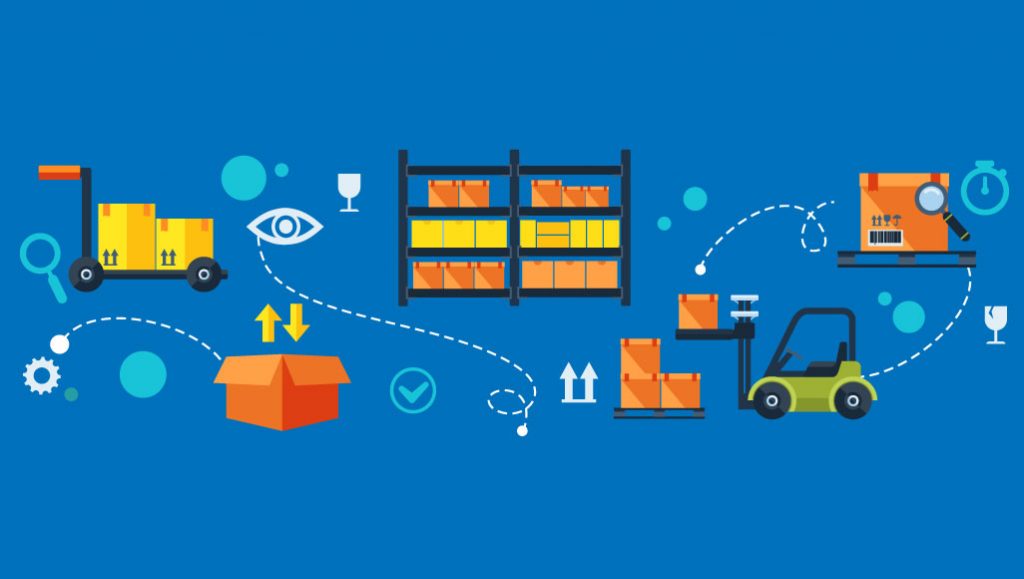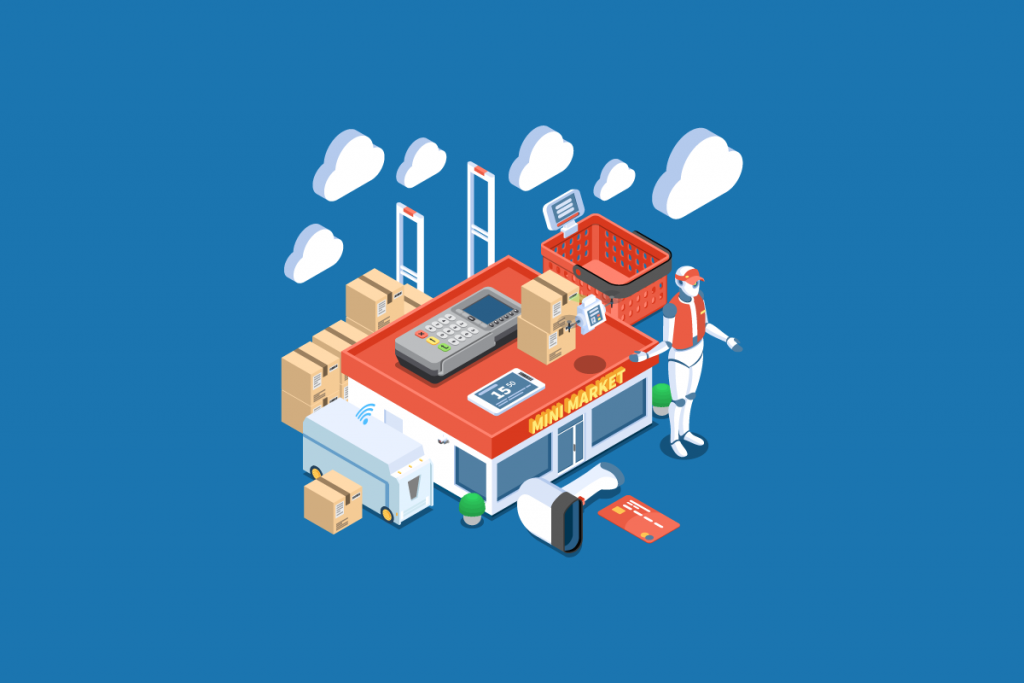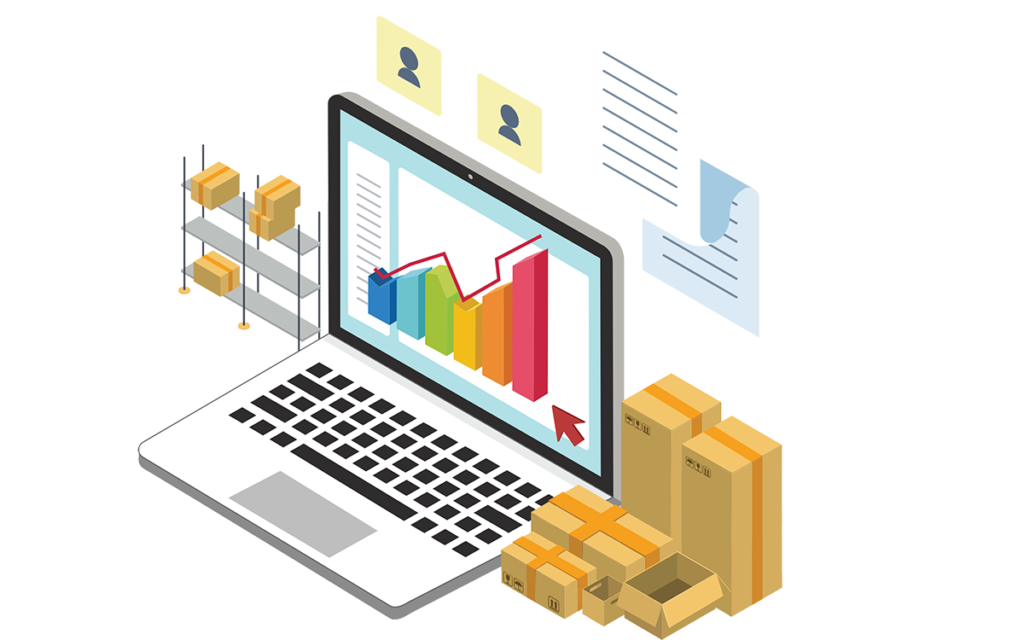Have you ever considered and managed the products of a workplace? Imagine entering a bakery and buying a muffin. Each element that plays a role in the process is an inventory and must be properly handled from the ingredients that are used to make the muffin itself. It’s the same with both national and local companies. The management of inventory is an important method for commodity inventory monitoring. The idea is to keep prices, which allows businesses to become more successful. You will read in detail about the inventory management objectives in this post.
Table of Contents
What is inventory management?
Before understanding inventory management, we should know what inventory is. Inventory is a business resource that exists in the form of raw materials, semi-finished products, and finished products.
- Raw materials: are raw materials that are sold or kept for future production, sent for processing, and purchased on the way home.
- Semi-finished products: are products that are allowed to be used for production but are not yet finished and finished products are not kept in stock of finished products.
- Finished product: is a finished product after the manufacturing process.
Products are kept as inventory to ensure adequate, regular, and continuous supply to customers as required. Raw materials and events are held as inventories to avoid incidents or interruptions in the production to effectively scale purchases in large quantities (discounts). The increase or decrease in inventories of the business impacts a change in economic activity. That is why a business must manage their inventory carefully, and they have their own inventory management method.
Inventory management is a strategy for properly storing stored products, inventories, and non-capitalized assets based on their unique shape and location. It includes a process of ordering, storing, and using inventories. This stock management comprises generating the lead on raw materials, components, and completed goods, as well as storing and processing such things in your organization.
The primary principle of inventory management
The fundamental premise of inventory management is holding cost. If you suddenly need to order more materials, you have to pay more for delivery expenses, which is disadvantageous for your business. Additionally, you have to charge huge money for storing when you have too much inventory because of hiring stocks. That is why you need effective warehouse management to help you control the cost.
In the case that you can control the inventory quantity, but it is hard for you to know what inventory is in your stock or being delivered for consumption. You will spend a lot of time and money looking for the metaphorical needle in a haystack. The solution is to keep track of the investment amount, which should be balanced between purchase and operating costs by purchasing items in the optimal number. It will assist you to avoid outdated goods from languishing in the back of the warehouse, being passed over in favor of products that have just arrived.
In short, bad inventory management may cost you money, which can eventually lead to higher prices for your customers.
The main objectives of inventory management
Smooth fulfillment
This is one of the main inventory management goals and objectives. If you have an order in your hand for the finished goods, but you cannot complete the order because the inventory is scarce, then it is not ideal. Not only does this endanger the performance of the order, but it also damages your company’s credibility due to a delay in its committed deadlines.
If such a condition is not to arise, the inventory management objectives are always adequately managed and a stock management system helps to do the same. In an example, let’s understand it better. Suppose you’re an editor of the book.
You have an order to provide a store in town with 100 books. The supplier does not know about the inventory that the sales agent takes the order from. He just orders it and transmits it for execution to the warehouse.
Just 50 titles are available at the warehouse against a 100-purchase order. This will affect the future business relationship with this store and not just this individual order.
Such problems can be addressed with an inventory management system in which many users operate on the same system, each of whom is assigned different tasks.
Having sufficient supply
Inventories should be readily stored beforehand, from raw materials to the finished product. To prevent manufacturing from suffering when a consumer needs it, you need to supply the material in sufficient volume. This is one of the main goals of inventory management.
Supply tracking is a way to ensure that inventories are available for consumer needs. One of the inventory management objectives also allows demand to be shaped according to the current supply. You can only set these customer demand-oriented objectives if you have sufficient supply to satisfy that demand.
Know when to scale or shrink the production of goods
If you are a producer, you know that at times you just have to scale out output to satisfy market demand and reduce production particularly at the end of the peak season. One of the inventory management objectives is to allow you to know exactly how many items are actually in your inventory at any point so you have a clear picture of when to scale up and down your output.
Let us look at an illustration to explain this better. You’ve got a small production umbrellas company. You cannot simply continue to produce umbrellas year-round, as the market for umbrellas only lasts for several months of the year.
The inventory management objectives are to see precisely how many manufactured umbrellas are in real-time with you at all times. It allows you to call for output to be increased or decreased by the end of the season.
Minimizing costs
Currently, the main key objective of inventory management is the reduction of costs. To be financially correct, you should minimize the unnecessary money. After all, money is a key constraint. It would help if you kept the inventory expenditure to a low level and also monitor the cost of material to reduce the cost of production.
If you do not sell the goods in the inventory, your assets could become liabilities unexpectedly. Therefore, one of the smart goals examples for inventory control is to ensure that the inventory does not lose capital. Objects can be used when the original value is present.
Minimize your working capital as much as possible as other activities such as business and sales are also required. You avoid buying costs, carrying costs, or storage costs when managing the inventory effectively.
Reduce losses due to theft and wastage
Another main goal of inventory management is this. The sum of inventory, from the raw material to the finished product, is handled in most organizations. All this inventory needs to be carefully handled so that fraud, waste, etc. causes minimal loss.
Anyone cannot record incidents of robbery and other unwanted activities because the inventory is not properly managed. Let’s take an example. You operate an eCommerce company with an inventory of 1000 or more exclusive smartphone accessories.
Hundreds of items are often sent to customers by courier from your warehouse at any given time. At the same time, several parcels come as returns, unlimited deliveries, and so on back to your warehouse. An effective inventory management system must be in place to monitor all of them. If no warehouse staff member marks an inside entrance into the customer’s shipment system and just steals it, the company could lose the shipment through theft in its absence.
Clear off the slow-moving goods
Not all the products that you make will in certain cases fly from the shelf. There may be a few items that are moving slowly on the market, but many of them are already in your inventory. Any form of company cannot simply keep its working capital in such products blocked.
One of the inventory management objectives is to clear those slow-moving items. Let us take into account that you are a clothing manufacturer. As part of your summer range, you have created around 100 different models. At the end of the season, you know that about 10 of these models have not been effective in the market and are not moving away from the shelves.
As you do not want to continue investing in these goods, you decide to decrease prices by 50% to sell the items without any benefit. It is only possible to make such an educated decision if an appropriate inventory management system is implemented that analyzes sales models and informs you which products are slow-moving.
Optimizing product sales
The core target of all businesses is getting more sales, and any tool has a role in assisting enterprises to enhance their sales. That is why the objective of inventory management is optimizing product sales. The analysis of commodity pricing trends is another thing that is considered an inventory management objective. Sales are an essential and crucial step of the whole operation. It helps to understand the current situation and to build on the review of potential predictions. For example, you can detect and remove slow-moving goods.
Only suppose you sell beauty products. Some goods do not do a good job on the market. Sales are not as forecast, and they are all waiting on the shelf. It does not seem like a smart idea to keep those products that no longer sell.
In that case, you can reduce costs or even find some way to dispose of them.
How inventory management can save your money?
One of the main inventory management goals and objectives is to save you large sums of money for business activities. The retail sector loses $472 billion a year to excessive stock, according to a report by the IHL Group. The distortion of inventory produces $1.1 trillion in price tags, representing 7.3% of world retail sales.
When you have to sell expected customers and goods, every decision counts. If a contractor runs a brick-and-mortar shop and gets a stowage, his customers are more likely than waiting for restoration to shift to e-commerce or a nearby rival. Although this money is still in the industry, it is a loss for this business. However, you will profit from such circumstances as an e-commerce user.
Due to the lack of money for more supplies, it can be difficult to restock in the worst-case scenarios for the continuous loss of money to inefficient processes. Your inventories impact your cash flow directly. You get your company closer to growing its sales and get more happy customers by streamlining your warehousing methods.
One of the smart goals examples for inventory control is Intel. After placing the low-cost Atom chip on the market, the company substantially reduced supply chain expenses. The cost for the supply chain of approximately $ 5.50 per chip for units that sold for $100 was bearable, but the price for the chip was around $20 a fraction.
The Supply Chain Cost Reduction Challenge: Intel had, however, only one area of control to reduce the supply chain cost of the Atom chip – Inventory.
There was also no way to reduce duties with a nuclear product being a single item. Intel’s packaging has already been reduced to a minimum, and the chips’ distribution cost cannot be reduced further at a high value for weight ratio.
Does inventory management work for all inventory types?
You need an efficient way to handle the inventory to succeed, whether you store raw materials or finished goods. Each inventory will require various techniques, but all of them require an ordered structure. If you practice smart management, which is beneficial regardless of the type of business you operate, your costs for products sold and for other expenses will drop.
To minimize the cost of ordering new raw materials, practice using the formula of EOQ. Use the DIO equation to develop ways to get finished goods off the shelves more quickly. Upgrade the production processes to reduce the quantity of work-in-progress inventory in your plant. Inventory control will hold you in compliance if the industry regulation requires detailed documentation of every item – whether pharmaceutical or firework.
>> Read more: 4 Types of inventory management systems for Small Business
How can you measure the successful integration of an inventory management system?
Successful integration depends on several common objectives, but it depends on the details of your business. Each main objective of inventory management is to improve refill performance, give an overview of stocks, allow fast scalability, and reduce inventory-related costs. You need to examine past data and equate it with current numbers to decide if a new solution works as planned.
You can ask questions like this:
- After the adoption of new technologies, how much has your dead stock declined?
- Have inventories and excess inventories decreased?
- In the absence of manual counting, how much time did workers spend on other tasks?
- Did your cost of warehousing drop drastically or gradually?
Final words
There are tons of warehouse management software having surpassed functions that can assist you in managing inventory. And Odoo is one of them.
Being the silver partner of Odoo, Magenest has seasoned developers and specialists having thorough knowledge about business issues, even about warehousing. After 7 years of working with all types of partners, we have a deep dive into business problems and how to handle them. We will give you the best solution for inventory management with Odoo software.
If you have any requirements, don’t hesitate. Just contact us now!


















